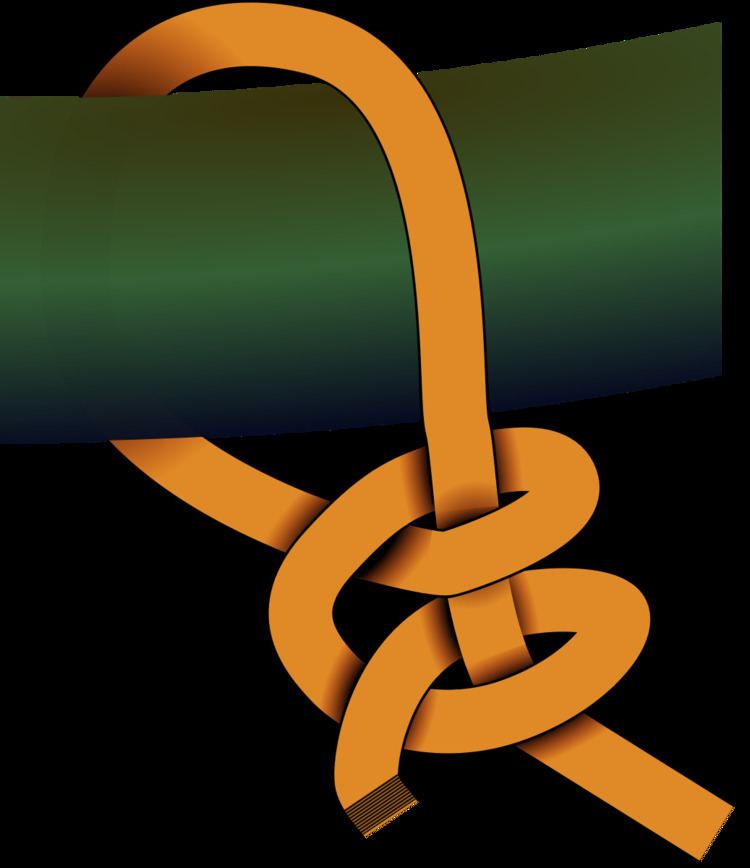Category Hitch Releasing Binding Caveat low security. | Origin Ancient Typical use General-purpose hitch | |
 | ||
Related | ||
The two half-hitches is a type of knot, specifically a binding knot or hitch knot. It consists of an overhand knot tied around a post, followed by a half-hitch. Equivalently, it consists of a half-turn around a post followed by a clove hitch of the running end around the standing part.
This knot is also sometimes referred to as a clove hitch over itself, or double half-hitch.
The following three-step process for tying the two half-hitches is also explained in the image gallery below. Click on the images for high-resolution versions.
- Begin by forming a clockwise loop around the pole, with the working end of the rope on top. Bring the working end through the loop. At this point, you have an overhand knot around the pole.
- Bring the working end down and to the left. Loop it under the standing end. Pull the working end through the loop just formed, tighten, and slide the knot along the standing end up to the post.
- A correctly tied two half hitches resembles a clove hitch tied around the standing end of the line, not a cow hitch.
To release the knot, pry apart the two hitches with a bending motion. However, it can often be difficult to untie. To help avoid this problem, tie a slipped variation: in the second half-hitch, pass through a bight, as when tying your shoe, rather than the entire free end.
